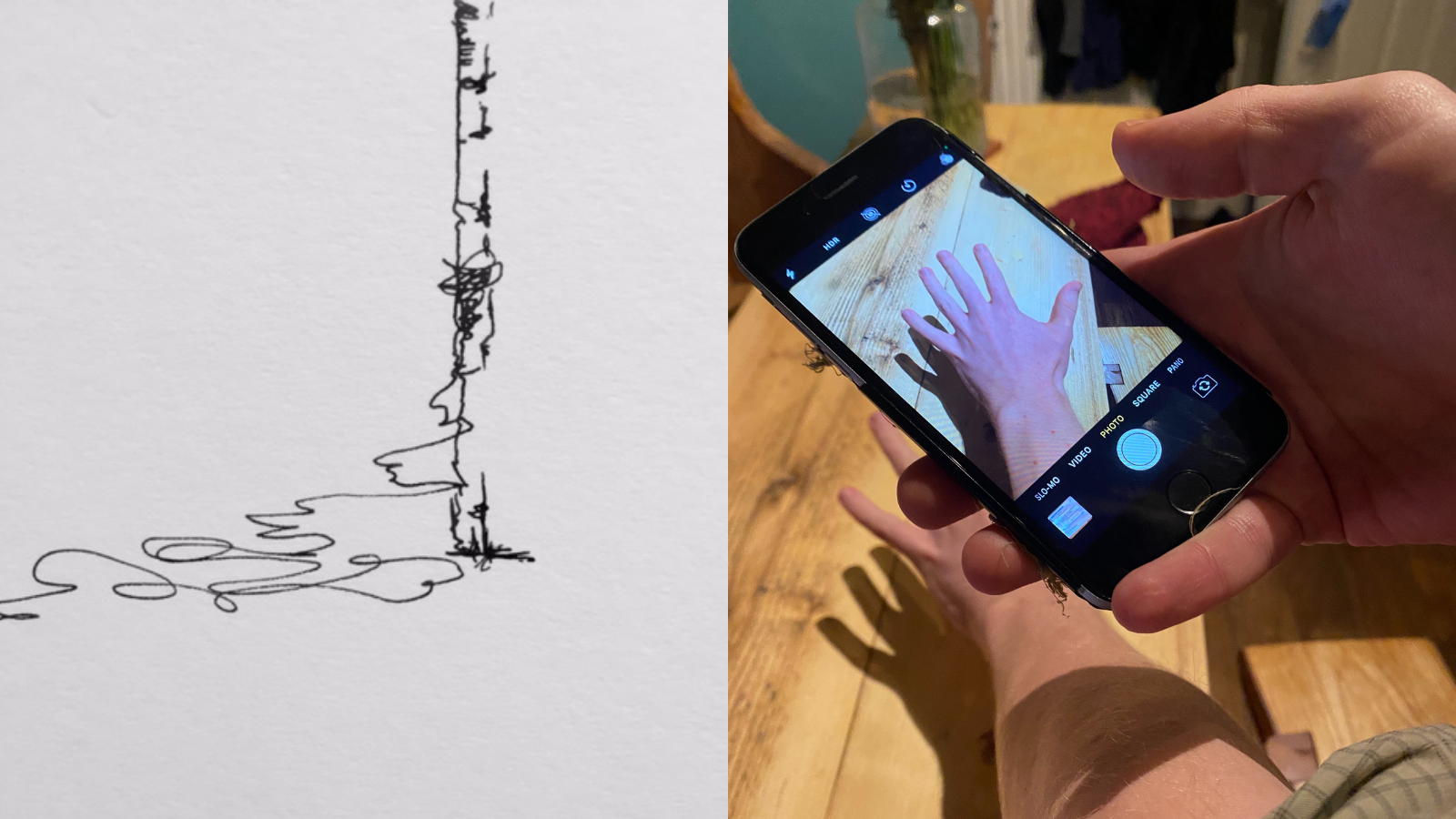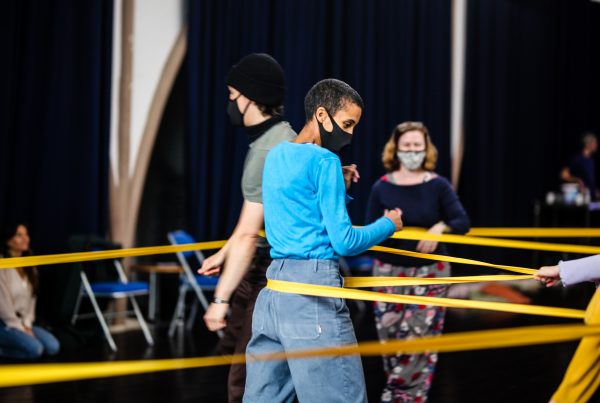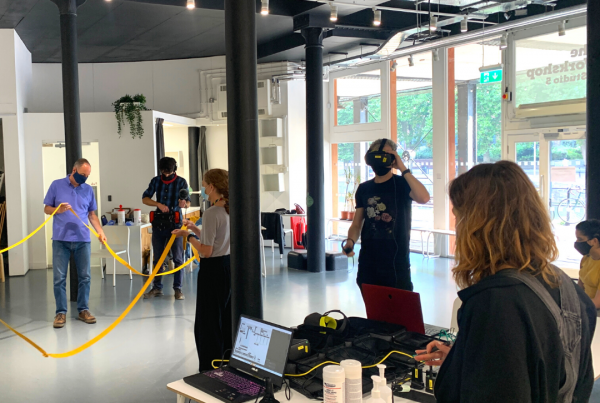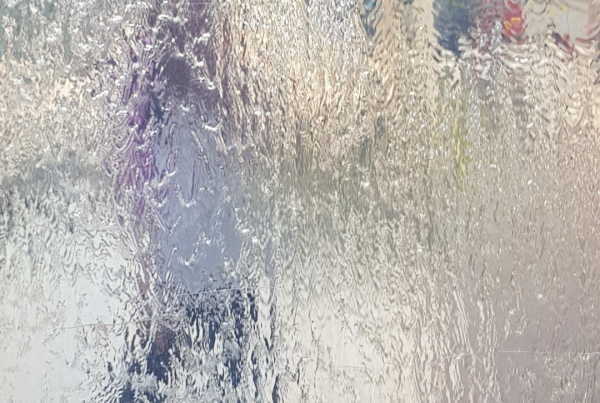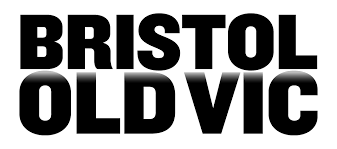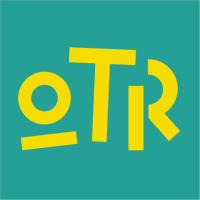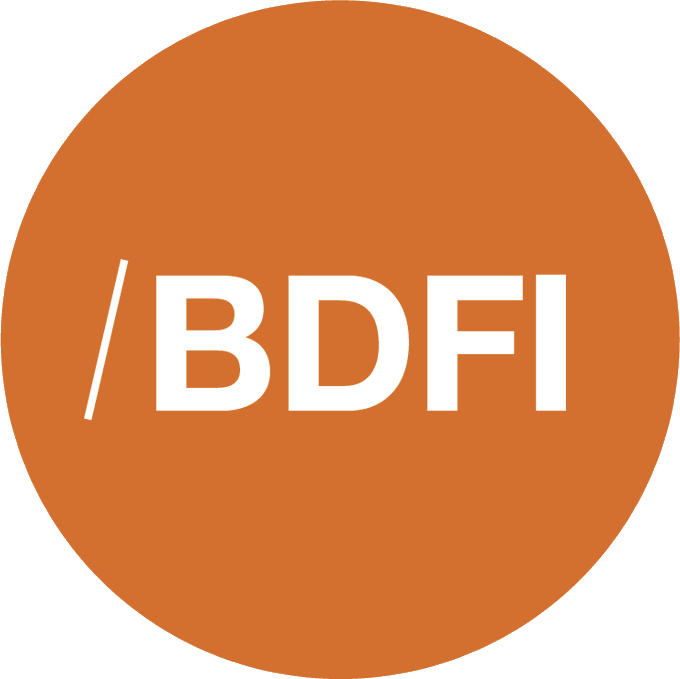Introducing Ania Varez and Bryn Thomas, who discuss their invitations, the In-Body project as a whole, and the future of dance interactions and technology. We gave them the option to respond in a way they chose, so Ania has written their answers, while Bryn responds in voice note form.
We hope you enjoy their shared engagement with the topics, and the conversation they’ve produced.
What is In-Body about, and who is it for?
Ania: In-Body is about accessing an experience that connects people to their body, their environment and the materials of SOMA. On paper, it is for anyone who is curious about perception and mind-body connections, but I personally also think about these invitations as mediations or games: just a moment in the middle of the day where you can tap into awareness, into noticing, questioning and feeling, with a bit of company from us.
Bryn:
What is the role of technology in your In-Body invitation?
Ania: I sometimes feel distant from technology all together, so whilst making this invitation, I had to find a channel that made me feel physically connected myself, in the hopes that others will feel that too… And that’s how I ended up using my voice and the recorder. There’s something about the voice being a material that literally leaves the device where it comes from, there’s something very bodily about it. Like reaching out to someone and placing my hand on their shoulder. At least that’s how I feel when I listen to audiobooks or voice messages. The technology supports the voice to be carried elsewhere, into people’s houses and spaces.
Bryn:
How does it feel for you, as a dancer, to be creating work that is accessible to everybody – not just dancers?
Ania: I love it. It’s probably my favourite thing to do. All of my work (including being a community worker) revolves around co-creating languages with people who are different from one another or experiencing some sort of isolation or disconnection. The majority of the time, I work with people who don’t identify as dancers. I’m very passionate about holding spaces for different people to come together and figuring out together how to learn from each other with compassion and creativity. This invitation is a bit more unilateral (as I have to create it and then release it into the world, instead of being in a room where people are and being able to respond to them directly), but this wish to connect to others was definitely on the back of my mind when I made it.
Bryn:
How does your In-Body invitation differ from your everyday work as a dance artist? Are there themes that are common to both?
Ania: I’m much more used to being in a room with people, feeling their energy and getting a lot of instant feedback from them. For it to feel more like a conversation.
This was different as it went out into a digital platform and then into people’s perception, there’s that distance between me and those receiving the invitation that makes it a bit more scary; but also very lovely in terms of having room to craft something based on my experiences with SOMA and what I find beautiful and interesting all together.
I did feel like wrapping up a gift without knowing who I was delivering it to, and wanting to make it generous for as many different people as possible.
Bryn:
What has been your favourite part of In-Body so far?
Ania: Making the invitation! I loved the feeling of being in my own little laboratory, putting pieces together, gathered in a very long journing with SOMA and with my general practice, in order to create this one invitation for others.
Bryn:
